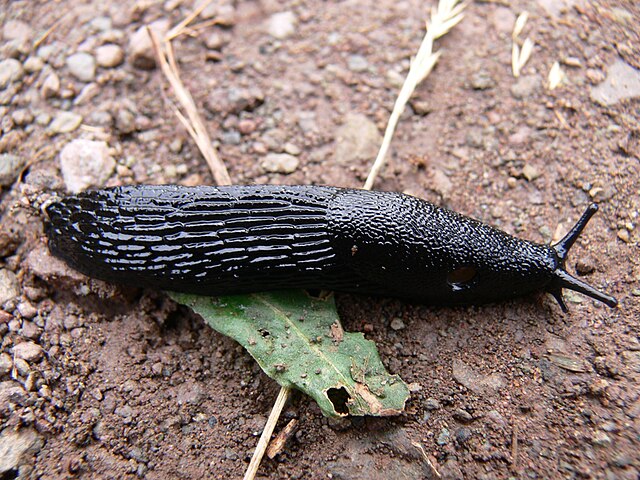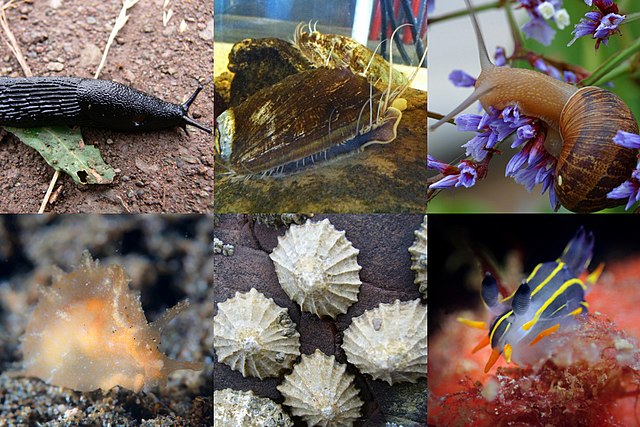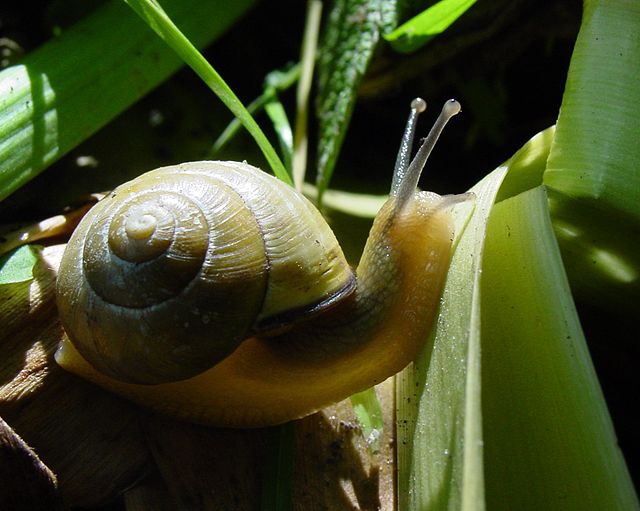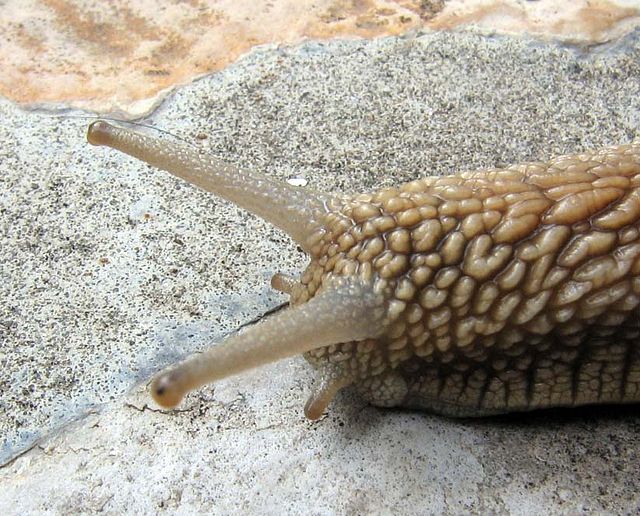The black slug, Arion ater, is a large terrestrial gastropod mollusk in the family Arionidae, the round back slugs. Many land slugs lack external shells, having a vestigial shell. Most slugs retain a remnant of their shell, which is usually internalized, unlike other terrestrial mollusks which have external shells. Without such shells, slugs produce mucus, that may also contain toxins—to deter predators. Terrestrial slugs produce two other forms of mucus that facilitate locomotion and prevent death from drying. Such mollusks are hermaphroditic. Slugs most often function as decomposers but are also often omnivores. Arion ater is one such slug, decomposing organic matter, preying on other organisms, and consuming vegetative matter including agricultural crops. Native to Europe, the black slug is an invasive species in Australia, Canada, and the United States.
Black slug
Brown variant of Arion ater
Brown Arion ater
Brown variant found in Tilleda, Germany
Gastropods, commonly known as slugs and snails, belong to a large taxonomic class of invertebrates within the phylum Mollusca called Gastropoda.
Gastropoda
Cepaea nemoralis: a European pulmonate land snail, which has been introduced to many other countries
The shell of Zonitoides nitidus, a small land snail, has dextral coiling, which is typical (but not universal) of gastropod shells.
The upper pair of tentacles on the head of Helix pomatia have eye spots, but the main sensory organs of the snail are sensory receptors for olfaction, situated in the epithelium of the tentacles.








